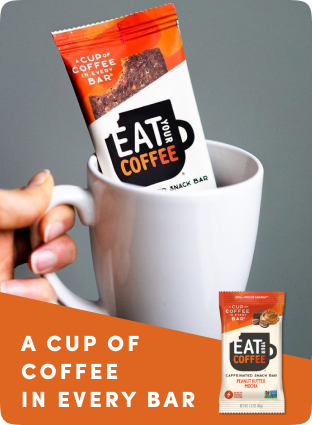However, the word "secrets" may be misleading, as if this information is only available by trekking through Nepal and studying with the great leather gurus. No, sadly this knowledge required no Himalayan sojourns.
Of course, I compiled what I learned from thousands of miles of backpacking experience, so maybe it did take a long journey. One day, I found myself accidentally managing a footwear department for a large sporting goods retailer. Though I'm still not too sure how I ended up there, it was "fun" outfitting people for their trips and training the staff to do so. Who's better to sell you boots, than someone with a passion for backpacking?
That part of life is thankfully behind me (anyone who ever worked retail will understand the "thankfully" part) but I'm still current when it comes to footwear trends in the hiking world. Anyone who has ever been in my gear dungeon understands that I am the Imelda Marcos of hiking boots.
For a hiker, well for me at least, there is no one boot that does everything I want it to do. A hiker needs a full compliment of footwear, especially for year around hiking. One of my favorite brands out there is Keen - mainly because of the wide forefoot which accommodates my squarish feet. That said, I have a myriad of boots from that company alone: waterproof, non-waterproof, insulated, non-insulated, low, and mid.
Before we begin with Hiking footwear buying tips, lets review the the three major mistakes people make when shopping for hiking boots.
- Not trying enough brands and sizes on.
- Buying them online or without trying them on first.
- Buying too much or too little boot for the activity.
5 Quick Tips
- Try on hiking boots at the end of the day when your feet are more swollen.
- Bring the socks you plan on hiking with you.
- Try on multiple brands in various sizes.
- Never buy the display model; people like cramming their size 13 foot into a size 9 to see "how it looks."
- Walk around in each boot, grab a pack off the wall, and go for a mini hike around the store.
Where Are You Going Hiking?
The first question any outfitter should ask of a perspective boot buyer, is "where are you going hiking?"
Though an open-ended question does inspire conversation and allow one to home in on the needs of the customer, it is one you need to ask yourself too.
What kind of hiker are you? Are you an ultra-long distance backpacker, an off-trail bushwhacker, heavy load hauler, or primarily a day-hiker? The kind of hiker you are, and where you plan on hiking affects the type of boot you plan on buying.

The Niagara Falls Gorge where I often hike, is rocky and slippery. You need a medium weight hiking boot with good durability and great traction.
Lightweight

Three lightweight hikers: Keen Targhee, Merrell Refuge Core and Merrell Trail Glove
Midweight

Midweight hiking boots: Danner Zig-Zag, Keen Red Rock, Danner Agitator.
Heavyweight

Heavyweight selections from Danner and Keen
Mountaineering

Mountaineering boots from La Sportiva
How Much Support do you Need?
Though mountaineering boots offer an insane amount of support, they are pretty uncomfortable to wear if you are day hiking the local rail trail.
Generally backpacking boots can be divided into four categories:
Lightweight:
Sometimes little more than rugged sneakers, lightweight hikers are highly flexible, generally low-cut, and very comfortable. Lightweight hikers are made for day hiking on well-groomed trails and carrying a light pack. Generally, lightweight boots are low cut. Expect little to no break-in period with these boots, generally you can wear them right out of the box.
Midweight:
Most hikers and backpackers opt for boots in this category, as they offer the flexibility of a lightweight hiker with the support of a heavyweight boot. Most medium duty hikers are mid-cut on the ankle, offering more support. Make sure you break these boots in on a few day hikes before taking them out on a multi-day backpacking trip.
Heavyweight:
Designed for backpacking over rough terrain and carrying a heavy pack, heavyweight boots offer hikers great support. Heavyweight boots generally have uppers made out of full-grain leather and midsoles stiffened with a shank; these boots have substantial break in periods.
Mountaineering:
If you are wearing crampons and kicking steps into ice for hours - you need a mountaineering boot. These boots have stiff shanks, protective rands, and are crampon compatible. Most are insulated as well. Don't expect to break in mountaineering boots; they break you in.
Do high top boots prevent ankle inversion?
Most hikers credit mid to high height hiking boots with the ability to stop twisted ankles; however, that may not be the case. In a 1993 study of 622 athletes, James Barrett et. al. found that there was no significant difference between sprain rates for high-top and low-top shoe wearers.
Conversely, in the study, "Effects of High-Top and Low-Top Shoes on Ankle Inversion," Mark Ricard et. al. concluded that high-top shoes reduced ankle inversion by an average of 73o reducing ankle sprains.
I wear low boots for most of my backpacking and hiking; however, I carry a lightweight pack and am very conscious of my step placement. In the winter and for search and rescue missions, I always opt for mid and high height boots.
As with most things, the question to mid or not to mid, is personal preference.

The major components of a boot

The heel cup on Keen boots holds my heel in well.

Aggressive lug patterns help you from sliding off slick rocks.

Gore-tex footwear is waterproof and breathable

The Merrell Siren uses Q Form for a truly anatomical fit for women.

Always wear gaiters? Look for gaiter hooks.
Qualities of a Good Hiking Boot
Use the following guide to help you evaluate the trail-worthiness of hiking boots.
Durable Upper:
Though you should always wear the lightest boot you can get away with, if the bush rips apart your boots, you won't be happy. Leather boasts the most durability, but most backpackers choose a boot with mixed leather and Cordura nylon.
Stable Heel Cup:
A great fitting and stabilizing heel cup locks your heel into place and stabilizes your entire foot. Not only does this protect you from blister-causing heel slip but holds your ankle in a great support position too.
Aggressive Outsole:
Though we often make jokes about the "waffle stompers" in the early days of backpacking, the right tread can save you from sliding down a muddy slope or falling off that log you are trying to balance on. Modern hiking treads, the most popular from Vibram, are designed to inflict minimum damage to the environment while providing great traction.
Waterproof / Breathable Membrane:
Not all hikers need a waterproof breathable membrane in their shoes, however most choose this option. Though it is easy to make a boot waterproof or breathable, most uppers fail to combine the two.
Why breathable? Most backpackers easily sweat 1 cup of water out of their feet! If you can wring the sweat out of your socks at the end of the day, your boots may not be breathable.
The three best performers out there are Gore-tex, eVent, and KeenDry.
To maintain breathability and waterproofness, clean your boots regularly and retreat the DWR with a product like Nikwax at least once per year.
Anatomical Design:
As John Gray illustrated, women and men are different. The differences between the sexes don't stop at the feet nor in the science of the gait. Therefore, avoid companies that manufacture hiking boots by the "shrink it and pink it" concept. Most reputable manufacturers design boots for a specific sex.
Merrell, for example, uses Q Form midsoles to align the Q angle between women's hips and knees.
Gaiter Hooks:
If you don't wear gaiters, what's wrong with you? Anyway, for those hikers that wear gaiters, hooks (generally placed near the bottom laces) and fantastic for holding your gaiters in place. Sure, you can hook the gaiter hook on your laces, but, it tends to wear the laces out faster and not hold as well. Hint: If you are hooking onto your lace, wrap tape around around your laces to prevent abrasion.
That Foot Measuring Thing…

The Brannock device is a staple in most boot stores.
Yeah, the metal foot measuring thing is called a Brannock Device, it takes practice to use, and is a poor method of fitting boots anyway.
The problem with Mr Brannock is that people follow his advice religiously without deviation. Before drinking the kool-aid of the shiny metal prophet, be advised that footwear sizes differ greatly between brands. Yes, he may claim you are a size 10, but you better try it on, especially if it is a brand you are unfamiliar with.
When it comes down to it, Brannock gets you in the ballpark, but rarely takes you all the way home. So if Brannock tells you you're a size 7, try on the 6.5, 7, and 7.5. Personally, Brannock tells me I'm a size 10.5, but I range from size 10 through 12.
Though it measures length and width, the other downfall to our friend Brannock is that it cannot measure foot volume. Judging foot volume is a skill that is learned and best measured through boot comfort.
The important thing about buying hiking boots, is making sure you have the best fit. It doesn't matter what the boot looks like or what kind of accolades it has earned - if it isn't comfortable in the store, it won't be on the trail.
Insoles for Hiking Boots
Though the insoles that come with many hiking boots aren't too bad, you're best to replace them as soon as possible. Some endurance hikers even carry an extra set of insoles with them while hiking and switch midday. It allows the other pair to dry and rebound while still pushing the miles.
Sometimes a new set of insoles is all you really need. Was that boot comfortable at first and now you shudder to think of strapping it to your feet? When insoles wear out, most people tend to feel it in their knees and hips. So before investing in a new pair of hiking boots, try a new set of insoles.
Avoid the drugstore cheapies that your grandmother wears, and opt for a stabilizing footbed like Superfeet - a brand trusted amongst hikers and backpackers.
Sometimes it's All About the Socks

Hiking socks from Smart Wool and Keen keep my feet happy.
You can spend $300 on a pair of Italian hiking boots, but if you don't wear the right socks, you just threw your money away.
Always opt for socks that are specially made for hiking and backpacking. Generally, you have two options: wool or synthetic. Though some people swear by synthetic hiking socks, I generally feel that a good pair of MERINO wool hiking socks are the best thing for your feet.
Merino is a non-itch wool, harvested from Merino sheep, generally from New Zealand. The New Zealand Merinos graze in an extreme disparity of temperatures, hence their wool keeps you warmer in the winter and cooler in the summer. If you are looking to impress people, the fancy term is thermal regulation.
Years ago, I converted all my cotton socks to wash rags. I've worn merino wool socks (mostly SmartWool), year around ever since; I can't imagine wearing anything else on my feet.
Socks offer padding, cushioning, and wick the sweat away from our feet; however, the sock is the final piece to a good hiking boot fit. This is why you must try boots on with the socks you plan on wearing.
Yes, some outfitters have "try-on" socks, but do you know the last time (if ever) they were washed?
Opposed to cotton socks, merino socks last for years and will last longer if you wash them inside out with cold water, and tumble dry low. Using fabric softener will inhibit merino's natural wicking ability.
Many backpackers wear two pairs of socks, one lightweight polypropylene wicking sock, and a thicker wool sock. Tradition holds that this system reduces friction, hence preventing blisters. Personally, most hikers I know stopped the two sock system by upgrading to a superior merino sock. But, if the two sock system works for you, continue doing it.

This picture has nothing to do with discounts on boots, but I thought it was cool anyway. This is the swinging bridge over Royalton Ravine - a great place for hiking.
Buying Shoes Online and Getting a Discount
Websites like Zappos have made shoe buying online easier than ever before with great pricing and "free" shipping.
However, before moving that boot into your cart, think about the following:
- With the proliferation of counterfeit production in Asia, make sure your retailer is reputable enough not to sell you knockoffs that fall apart after a few miles.
- Make sure the website offers free shipping both ways - that way when they don't fit, you can send them back.
- Buying shoes online robs boot buyers of the experience of trying on many pairs of boots.
- Trying shoes on at a brick and mortar retailer, then buying them online is just wrong. Someone just spent an hour with you finding the perfect boot, that is the service you pay for. Yes, you may save money, but most retailers will price match if you ask them.
- If you ever have a warranty issue, a brick and mortar store will be glad to help you IF you purchased the original pair from them.
Besides price matching, there are ways to receive discounts on your hiking boots.
- Ask about any upcoming sales, and if you can get the price now.
- Many retailers offer discounts for outdoor clubs and organizations like the Boy Scouts.
- Ask if there is a discount for buying multiple pairs or for buying accessories like socks.

Got a rip in your boot's upper? Maybe it is still under warranty.
Your Old Boots May Be Under Warranty
Of course, if you have an old pair of boots that simply wore out or leak, they may still be under warranty. Most manufacturers offer a one year warranty, though you'd be surprised how many may honor it past that time in the name of good customer service.
I wrote extensively about this in "How to use a Warranty to Replace Your Boots." That article includes the contact information and warranty details for most major boot makers.
© Copyright 2012, Daniel Human
My New Favorite Hiking Boot - the Gypsum from Keen

Testing is finally complete on this new hiking boot from Keen.
Reviewing the Gypsum
If you are looking for a heavier duty light to medium duty hiking boot, check out my "Review of the Keen Gypsum Hiking Boot."
© Copyright 2012, Daniel Human
Written By: Daniel Human
Originaly Posted On: SkyAboveUs




